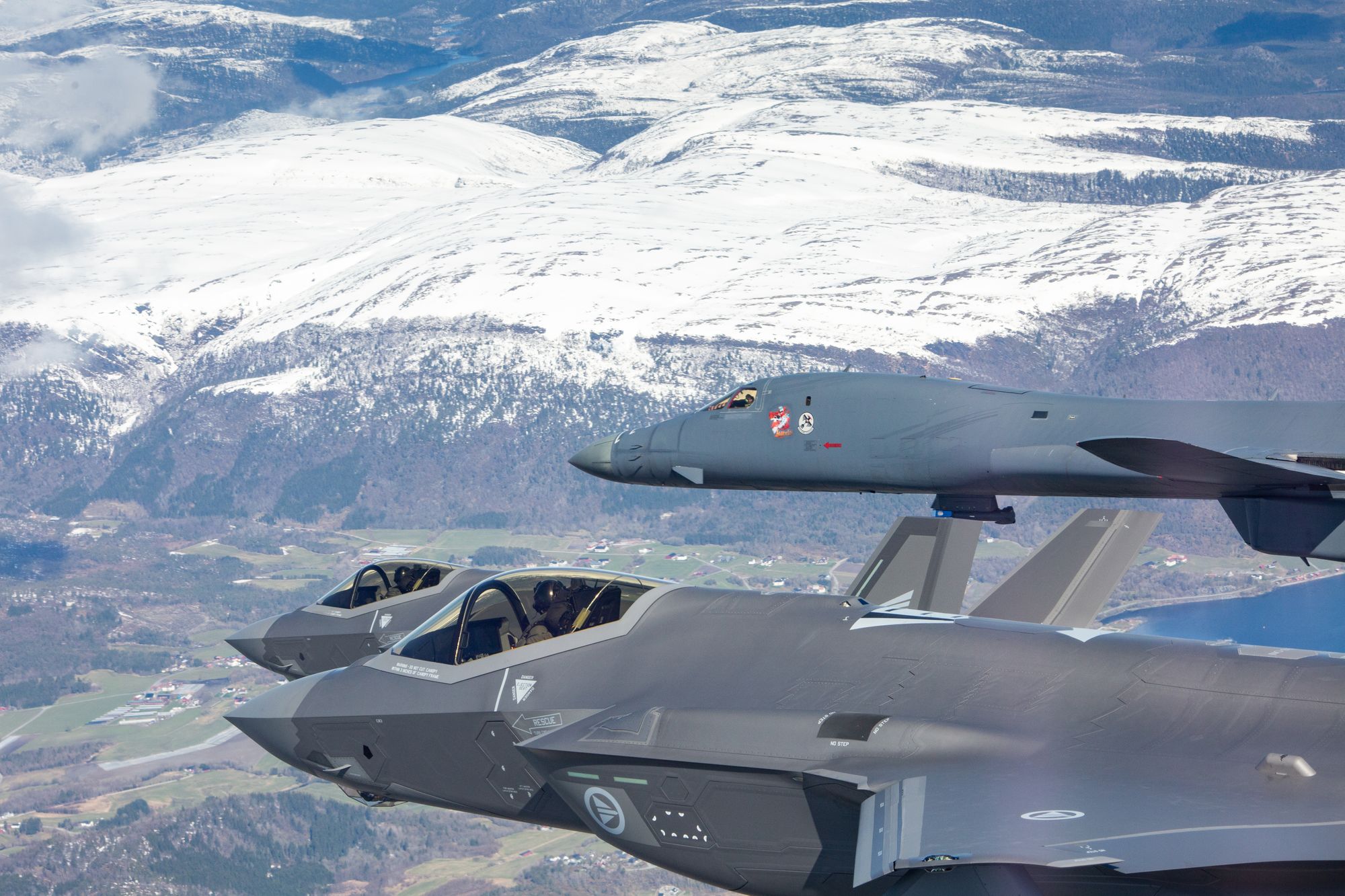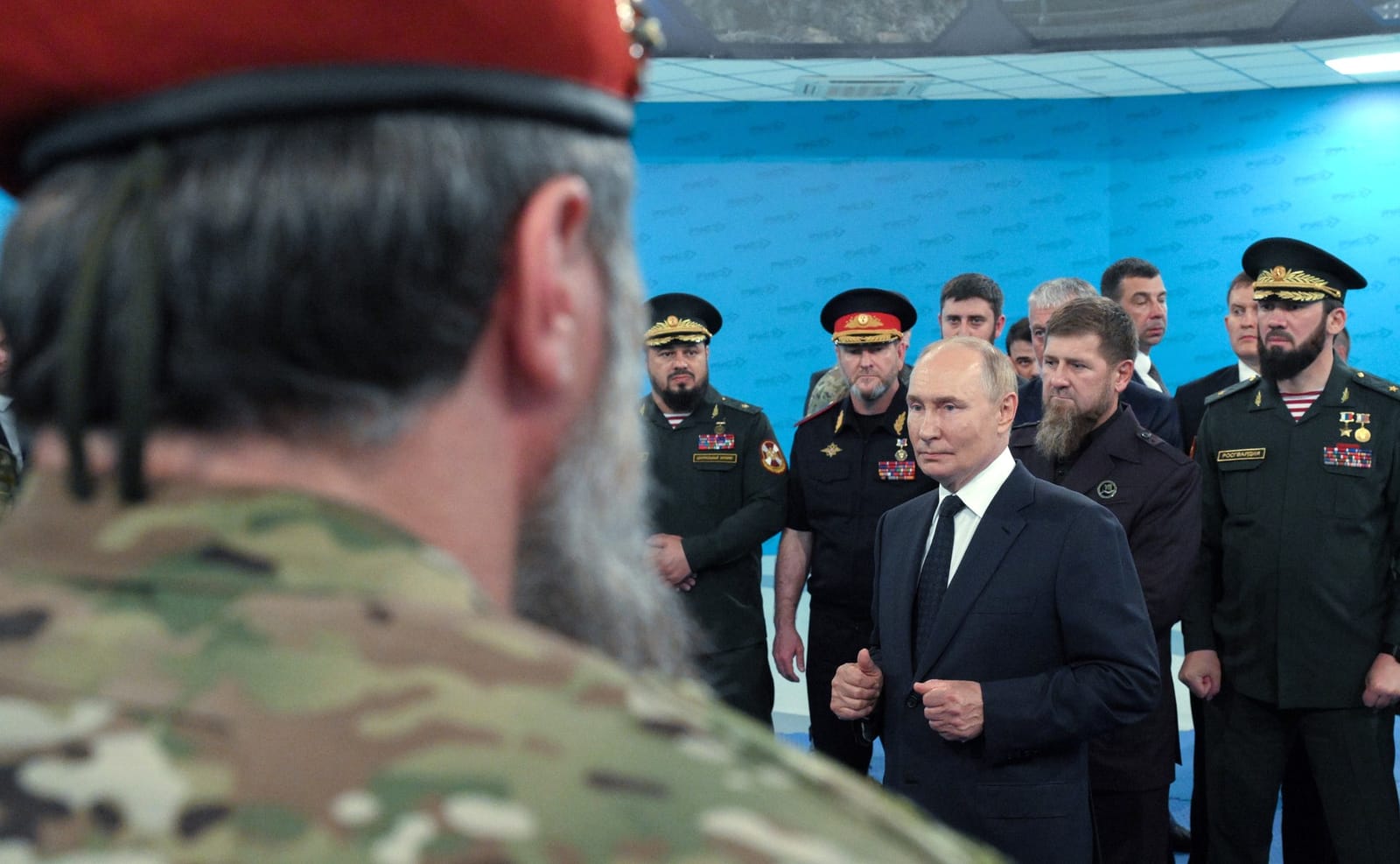Tactical airpower, in the shape of multirole fast jets supported by intelligence, surveillance, target acquisition and reconnaissance (ISTAR) aircraft, aerial refuelling tankers and smart munitions has provided NATO nations with an overwhelming advantage in conventional military power since the mid-1980s. Despite the dense integrated air defence system (IADS) fielded by the Warsaw Pact during the late Cold War, tactical airpower remained the most important NATO tool for blunting any Soviet advance, and its performance in the first Gulf War in 1991 suggested it was even more effective than its advocates had predicted. Although the Iraqi IADS in 1991 lacked the force densities fielded by the Warsaw Pact in Europe, many of the systems such as the SA-2, SA-3 and SA-5 were the same, and they were backed up by a network of ground-based early warning radars, and a theoretically formidable and combat-experienced air force. Ultimately, none of this was able to prevent the tide of US-led coalition airpower from conducting a rapid suppression/destruction of enemy air defences (SEAD/DEAD) campaign, which allowed them to subsequently devastate Iraqi ground forces with near-impunity.[1] In the following two decades, Russia and China have poured resources and expertise into modernising their own IADS capabilities to deny Western nations this overwhelming tactical air superiority in any future clash. Advances in surface to air missile (SAM) ranges, radar performance and third-party targeting capabilities have transformed the level of threat which these modernised IADS represent to Western air forces.
As such, the strategic balance between air superiority-centric and airspace denial approaches appears to be a much more evenly matching one than during the late Cold War, 1990s and 2000s.
Vital to deny western offensive air
There are two core factors which have driven Russia and China to adopt the airspace denial approaches which they currently rely on as a core part of their national defence strategies. The first of these is the one already alluded to; the severity of the potential military threat presented by Western tactical airpower to their own military forces, command and control capabilities and critical infrastructure. From a defensive point of view, Western airpower remains the most significant conventional military threat to their ability to defend their own territory. There is also a nuclear component since the United States and NATO retain air-delivered nuclear weapons in both standoff and penetrating guises.[2] Furthermore, the United States has developed a raft of conventional air-breathing penetrating precision strike capabilities which Russia and China worry could threaten their own nuclear early warning or command and control facilities at the outset of a conflict. Although the Chinese People’s Liberation Army Air Force (PLAAF) is rapidly improving its relative aerial strength, neither it nor Russia can match the qualitative edge of the top tier Western air forces with symmetrical approaches.[3] Therefore, it is only natural that both have chosen to focus heavily on ground-based air denial strategies via IADS development and deployments.
Both countries see it as vital that they can deny Western air forces the ability to rapidly bring offensive air capabilities to bear over their own territory.
NATO badly outgunned
The second driver, however, is more offensive in nature.
This is the recognition that in investing so heavily in airpower capabilities, the West has chosen to forgo firepower in other domains.
Essentially, the same successes in Iraq, the Balkans and Libya that caused Russia and China such concern over Western airpower capabilities also incentivised Western nations to continue to prioritise airpower over investment in other domains. As such, non-US NATO ground and maritime forces in particular are now extremely reliant on close air support in order to remain competitive.
In the absence of on-demand air support, NATO ground forces would be badly outgunned by their Russian equivalents, especially in terms of anti-tank firepower and artillery.[4]
Russia, by contrast, has continued to invest heavily in ground-based firepower in the shape of modernised heavy armour, artillery, rocket artillery and ballistic missiles.[5] What this means is that if Russia can deny access to the airspace over disputed territories, then it will de-facto secure a position of major operational advantage against NATO forces, at least until US Army heavy forces could be brought into theatre at scale. For China, the situation is slightly more complex, since its major potential adversaries are the United States, Japan, South Korea and Taiwan; all of which have ground forces with significantly greater levels of organic heavy armour and firepower compared to European NATO members. Consequently, the more important offensive benefits for China of securing airspace denial over disputed territories are in providing cover for the PLAAF and People’s Liberation Army Navy Air Force (PLANAF) to directly influence the ground battle. In other words, powerful land- and maritime-based IADS capabilities can prevent the PLAAF and PLANAF from being almost entirely occupied in defending themselves against more technically capable and experienced adversary air forces during any Chinese offensive ground or maritime operations.
A formidable detection threat
To achieve the defensive and offensive goals of their airspace denial strategies, both Russia and China have developed a similar, and in some cases shared, family of systems. The first element is a range of long-range digital, frequency-agile target acquisition and fire control radar systems. These include ground-based systems and aerial arrays mounted on AWACS aircraft or high-altitude, long endurance (HALE) class UAVs to improve range, especially against low-flying threats.
Both Russia and China have also developed a range of low-frequency, passive and multi-static radar systems to improve performance against stealth threats, provide a level of system redundancy and early warning capabilities.
When the network elements and command and control nodes linking these various sensor arrays into the broader IADS are working correctly, both Russia and China can present Western air forces with a formidable detection threat against all aircraft and can provide accurate guidance of long-range missiles against non-stealthy aircraft.
Long-range SAM systems
These missiles are the second key element, with very long-range missiles such as the 40N6 used in the S-400 providing a means for ostensibly defensive SAM deployments to extend airspace denial at medium and high altitudes far beyond Russian or Chinese borders.[6] Long range SAM systems include the Russian S-400 (which is also deployed by China), S-300V4 and the Chinese HQ-9B series. All use a variety of missiles, with large variants for long range targets and smaller, more numerous missiles carried to engage threats at closer ranges. These systems are designed to be deployed as the lynchpin elements of a much broader multi-layered IADS. In front of those long-range systems will be mobile medium- and short-range SAM systems such as the SA-17 and SA-15, which are themselves designed to exchange situational awareness (radar) data with the long-range elements. Combining medium and long-range SAM systems within a common IADS network which can exchange target data makes both sets of SAMs more lethal than they would be in isolation, and also makes the IADS as a whole much more efficient and resilient to degradation. The long and increasingly the medium ranged SAM systems are also being equipped with active seeker missiles with post-apex lock on capabilities.[7] This is important to understand because active seeker missiles allow the IADS to potentially engage incoming air and missile threats even at very low altitudes, providing that the system as a whole is able to provide a rough bearing and position on them using overhead sensors.
Majority is non-stealthy
On the air superiority side of the equation, the US now has over 450 fifth generation fighters in service, and there are another 50 or so F-35s now operational with European allies. These aircraft are generally capable of penetrations into airspace defended by a dense modern IADS, especially with support from electronic warfare enablers and stand-off strikes. While the latest Russian and Chinese low-frequency, multistatic and passive radar capabilities most likely allow them to detect and roughly track the presence of stealth fighters, they cannot yet reliably guide weapons to them. However, F-22 and F-35 serviceability rates remain a challenge, and the US fleets are spread over a range of global commitments that limits the force densities of fifth generation fighters than can be rapidly brought to bear rapidly in any one theatre.[8] Stealth aircraft are also limited to internal weapons carriage when operating in a high threat environment, which limits the number of organic strikes they can carry out per sortie. The vast majority of Western combat air assets remain non-stealthy, and therefore limited to standoff attacks or very limited penetrations into defended airspace until significant SEAD/DEAD has been accomplished.[9] Traditional stand-off attacks with cruise missiles require accurate targeting data to allow the weapons to get within range and field of view of the target with their own on-board sensors. This is especially true with mobile and camouflaged targets such as SAM launchers, command vehicles and radars. Currently, this task is largely dependent on the limited numbers of penetrating fifth generation fighters, as well as a few exotic US penetrating ISTAR UAVs. The limited availability of penetrating ISTAR and strike assets is therefore likely to be the bottleneck which limits the rate at which a modern IADS can be degraded and eventually rolled back. Loitering munitions such as the Israeli Harop offer the ability to designate a wider area within which standoff weapons can search for targets, but in pursuit of range and efficiency, such weapons tend to fly fairly slowly and are potentially vulnerable to interception by point defences, requiring multiple deliveries to guarantee target destruction.
The dilemma
The upshot for the current balance between air superiority and airspace denial centric strategies is that there are credible ways and means by which even the Russian or Chinese IADS could be rolled back and eventually defeated. However, the required timescale, cost and numbers of munitions, and risk level to even fifth generation platforms is much higher than in previous decades. More importantly, the time that it would take to complete a meaningful SEAD/DEAD effort might well lead to strategic failure for the West, due to its core reliance on ready access to on-demand air support for ground forces. There are only a few potential solutions to this dilemma.
The first is to increase investment in penetrating ISTAR assets such as F-35 and stealth UAVs; the resilient low-probability of intercept datalinks to allow them to cue in other force elements; and the large quantities of stand-off, stand-in and loitering munitions required to rapidly degrade modern IADS. All of these capabilities are very expensive and cannot be fielded by any one Alliance member alone in sufficient quantities. Therefore, this course of action would require strong multinational coordination of investment and mutual defence planning, and regular exercises to be effective. It would also come at a significant opportunity cost in terms of airpower capabilities optimised for lower-intensity mission sets, which would have to be cut or drastically reduced to pay for the modernised SEAD capabilities being sought. The alternative course of action would be to accept that airspace denial by peer competitor nations is likely to be an enduring problem, and so instead invest much more heavily in closing the firepower and protected mobility gap on the ground and at sea, to reduce Western dependence on air superiority to begin with.
[1] For more detail see John Andreas Olsen, Strategic Air Power in Desert Storm (London: Frank Cass, 2003)
[2] Examples include the B-61 Mod 12 precision guided free-fall nuclear weapon deliverable by NATO F_16, Tornado and soon F-35A dual-capable aircraft and the B-2 bomber in US service, as well a standoff nuclear missiles delivered by US B-52 Stratofortresses and the French Rafale with ASMP-A.
[3] Justin Bronk, ‘Russian and Chinese Combat Air Trends: Current Capabilities and Future Threat Outlook’, RUSI Whitehall Reports (30 October 2020), https://rusi.org/sites/default/files/russian_and_chinese_combat_air_trends_whr_final_web_version.pdf
[4] Jack Watling, ‘The Future of Fires: Maximising the UK’s Tactical and Operational Firepower’, RUSI Occasional Papers (27 November 2019), https://rusi.org/sites/default/files/op_201911_future_of_fires_watling_web_0.pdf
[5] Igor Sutyagin and Justin Bronk, Russia's New Ground Forces: Capabilities, Limitations and Implications for International Security (London: Taylor and Francis, 2017).
[6] For more detail see Justin Bronk, ‘Modern Russian and Chinese Integrated Air Defence Systems: The Nature of the Threat, Growth Trajectory and Western Options’ RUSI Occasional Papers (15 January 2020). https://rusi.org/publication/occasional-papers/modern-russian-and-chinese-integrated-air-defence-systems-nature
[7] For more detail see Justin Bronk, ‘Modern Russian and Chinese Integrated Air Defence Systems: The Nature of the Threat, Growth Trajectory and Western Options’ RUSI Occasional Papers (15 January 2020). https://rusi.org/publication/occasional-papers/modern-russian-and-chinese-integrated-air-defence-systems-nature
[8] US Government Accountability Office, ‘Weapon System Sustainment: DOD Needs a Strategy for Re-Designing the F-35’s Central Logistics System’, GAO Report Highlights (March 2020), https://www.gao.gov/assets/gao-20-316.pdf accessed 19 May 2021.
[9] Justin Bronk, The Future of NATO Airpower (London: Taylor and Francis, 2020), p. 20.
Denne artikkelen ble først publisert i Luftled 2021-2.
Foto: To B-1B Lancer bombefly som en del av Global Strike Command fra 34th Bomb Squadron Thunderbirds, 28th Bomb Wing US Air force flyr i formasjon sammen med norske F-35A kampfly. Bodø QRA 331 Skvadron / Forsvaret







